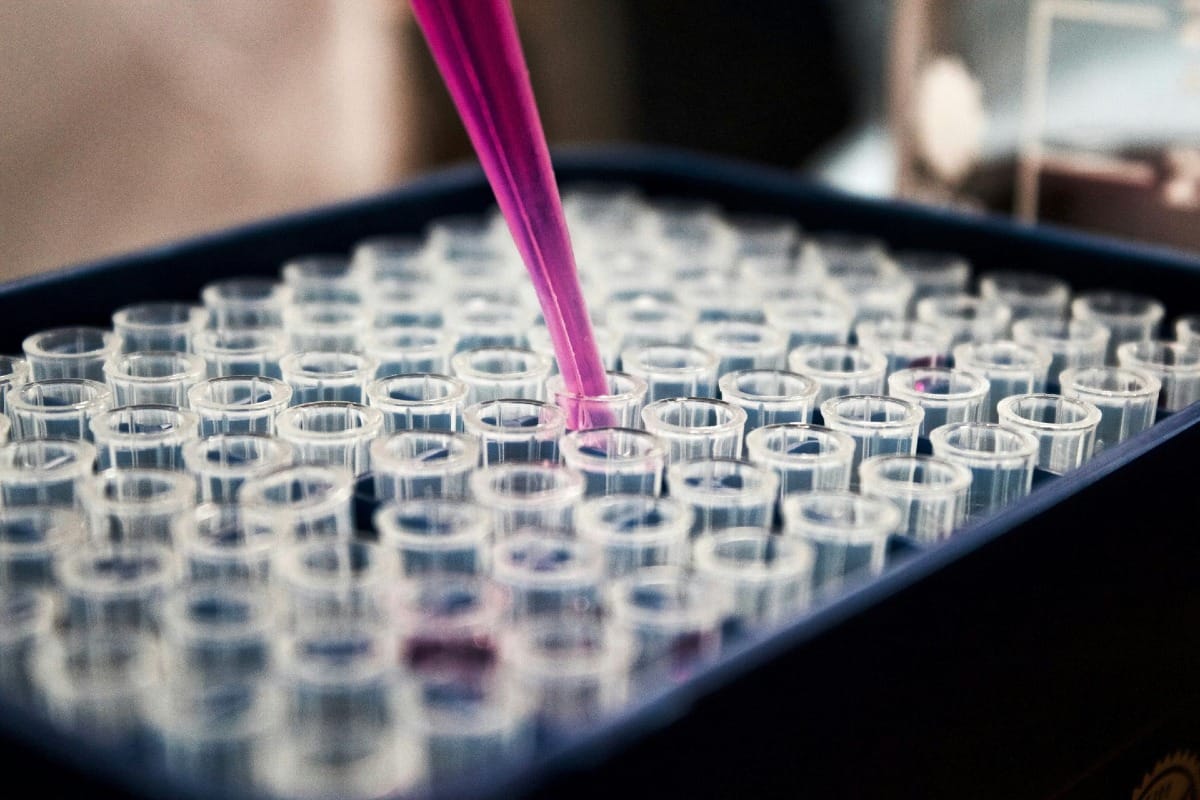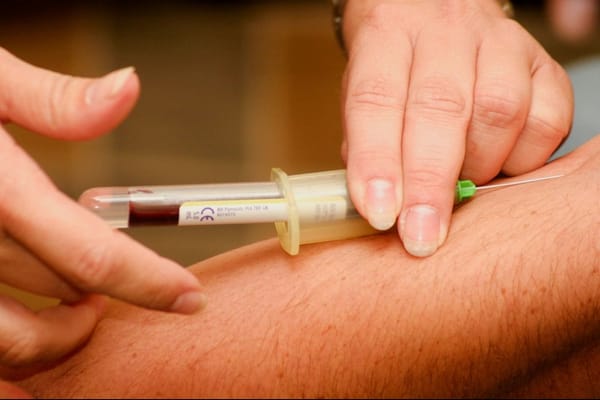Recent research has discovered that omega-3 fatty acids may offer protection against testicular damage caused by tamoxifen, a widely used breast cancer medication. This groundbreaking study explores how omega-3 supplementation could mitigate oxidative stress, inflammation, and mitochondrial dysfunction in the testes of tamoxifen-treated rats, potentially preserving male fertility.
Tamoxifen's Reproductive Impact
Tamoxifen, a widely used breast cancer treatment, has significant implications for reproductive health and fertility. While effective in treating hormone receptor-positive breast cancers, its impact on fertility is complex and multifaceted:
- Fertility concerns: Approximately 35% of women cite fertility concerns as a factor in deciding whether to take tamoxifen, despite limited conclusive evidence on its direct effects on fertility 1.
- Ovulation stimulation: In the initial phase of treatment, tamoxifen may actually stimulate ovulation, potentially increasing fertility temporarily 2.
- Menstrual changes: With continued use, about half of women experience changes in their menstrual cycle, including less regular or lighter periods, or cessation of menstruation altogether 2.
- Ovarian reserve: Studies have shown conflicting results regarding tamoxifen's effect on ovarian reserve. Some research suggests it does not appear to have a direct impact on fertility beyond the effects seen in breast cancer survivors not exposed to tamoxifen 1.
- Pregnancy outcomes: A systematic review of tamoxifen exposure during pregnancy found 122 reported live births, including 16 with congenital malformations 2. This highlights the potential risks of tamoxifen use during pregnancy.
- Contraception importance: Due to potential teratogenic effects, effective contraception is strongly recommended during tamoxifen treatment and for several months after discontinuation 3.
- Long-term effects: The long-term impact of tamoxifen on fertility and reproductive outcomes remains uncertain, with limited data on potential consequences for offspring 2.
- Alternative treatments: For women with fertility concerns, tamoxifen may be considered as an alternative to clomiphene citrate for ovulation induction, as it does not thin the endometrial lining in the same way 4.
- Treatment decisions: Concerns about fertility have led some young women (about 30%) diagnosed with hormone-receptor-positive, early-stage breast cancer to skip or stop tamoxifen treatment 5.
It's crucial for healthcare providers to have thorough discussions with patients about the potential reproductive impacts of tamoxifen, balancing the benefits of cancer treatment with fertility preservation options and future family planning goals. Individualized counseling and close monitoring are essential for women of reproductive age undergoing tamoxifen therapy.
Sources:
- (1) Impact of tamoxifen therapy on fertility in breast cancer survivors - PMC
- (2) Pregnancy on tamoxifen: Case-report and review of literature - NCBI
- (3) Tamoxifen Exposure during Pregnancy: A Systematic Review and ...
- (4) Tamoxifen for Infertility - University Reproductive Associates
- (5) Diagnosed Young Women Concerned About Fertility Skip Tamoxifen
Oxidative Stress and Inflammation
Oxidative stress and inflammation are closely interconnected processes that play crucial roles in various physiological and pathological conditions. Understanding their relationship is essential for comprehending the mechanisms underlying many diseases and potential therapeutic approaches.
Oxidative stress occurs when there is an imbalance between the production of reactive oxygen species (ROS) and the body's ability to neutralize them through antioxidant defenses 1. ROS are oxygen-containing molecules with unpaired electrons, making them highly reactive and potentially damaging to cellular components such as proteins, lipids, and DNA 1. While ROS are produced naturally during normal metabolic processes, excessive production can lead to cellular damage and dysfunction.
Inflammation, on the other hand, is the body's natural response to injury or infection. It involves a complex series of events aimed at eliminating harmful stimuli and initiating tissue repair 2. However, when inflammation becomes chronic, it can contribute to various pathological conditions.
The relationship between oxidative stress and inflammation is bidirectional and self-perpetuating:
- Oxidative stress promoting inflammation:
- Inflammation inducing oxidative stress:
This interplay creates a vicious cycle where oxidative stress and inflammation reinforce each other, potentially leading to chronic conditions 4. For example, in rheumatoid arthritis, both oxidative stress and inflammation contribute to joint damage and disease progression 3.
The combined effects of oxidative stress and inflammation have been implicated in numerous diseases:
- Cardiovascular diseases: Oxidative stress and inflammation contribute to atherosclerosis and hypertension 1.
- Neurodegenerative disorders: Both processes are involved in the pathogenesis of Alzheimer's and Parkinson's diseases 1.
- Cancer: Chronic inflammation and oxidative stress can promote tumor initiation and progression 1.
- Diabetes: Oxidative stress and inflammation play roles in insulin resistance and β-cell dysfunction 1.
Given the intertwined nature of oxidative stress and inflammation, therapeutic approaches often target both processes simultaneously. Antioxidant therapies aim to reduce oxidative stress, while anti-inflammatory treatments seek to modulate the inflammatory response 4. However, the complexity of these processes and their physiological roles means that interventions must be carefully balanced to avoid disrupting beneficial functions.
Lifestyle factors can significantly influence both oxidative stress and inflammation:
- Diet: A balanced diet rich in fruits, vegetables, and whole grains provides antioxidants that can help combat oxidative stress 1.
- Exercise: Regular physical activity can reduce chronic inflammation and improve antioxidant defenses 1.
- Stress management: Chronic psychological stress can exacerbate both oxidative stress and inflammation 1.
In conclusion, oxidative stress and inflammation are intricately linked processes that play vital roles in health and disease. Understanding their relationship is crucial for developing effective strategies to prevent and treat various chronic conditions. Future research in this field may lead to more targeted and effective interventions that address both oxidative stress and inflammation simultaneously.
Sources:
- (1) Oxidative stress and Inflammation: Causes, Effects, and Prevention
- (2) Does the Interdependence between Oxidative Stress and ... - NCBI
- (3) Inflammaging and Oxidative Stress in Human Diseases - MDPI
- (4) Relationship between inflammation and oxidative stress and its ...
Omega-3's Protective Mechanisms
Omega-3 fatty acids exhibit several protective mechanisms that contribute to their beneficial effects on testicular health and function, particularly in the context of tamoxifen-induced damage:
- Antioxidant Properties:
Omega-3 fatty acids, especially eicosapentaenoic acid (EPA) and docosahexaenoic acid (DHA), have potent antioxidant effects. They can directly scavenge reactive oxygen species (ROS) and upregulate antioxidant enzymes like superoxide dismutase and glutathione peroxidase 1. This antioxidant activity helps protect testicular cells from oxidative damage caused by tamoxifen treatment. - Anti-inflammatory Effects:
Omega-3 fatty acids modulate inflammatory responses through multiple pathways: - They reduce the production of pro-inflammatory cytokines such as tumor necrosis factor-alpha (TNF-α) and interleukin-6 (IL-6) 1.
- Omega-3s give rise to specialized pro-resolving mediators (SPMs) like resolvins and protectins, which actively promote the resolution of inflammation 2.
- They can inhibit the activation of nuclear factor-κB (NF-κB), a key transcription factor in inflammatory processes 1.
- Mitochondrial Protection:
Omega-3 fatty acids support mitochondrial function and integrity: - They can improve mitochondrial membrane fluidity and stability 2.
- Omega-3s enhance mitochondrial biogenesis and energy production 3.
- They help maintain mitochondrial membrane potential, crucial for proper cellular energy metabolism 1.
- Regulation of Apoptotic Pathways:
Omega-3 fatty acids modulate apoptotic signaling in testicular cells: - They can downregulate pro-apoptotic proteins like Bax and upregulate anti-apoptotic proteins like Bcl-2 1.
- Omega-3s may inhibit caspase activation, a key step in the apoptotic cascade 3.
- Membrane Stabilization:
EPA and DHA incorporate into cell membranes, altering their structure and function: - This incorporation can improve membrane fluidity and receptor function 2.
- Enhanced membrane stability may protect against tamoxifen-induced cellular damage 4.
- Modulation of Gene Expression:
Omega-3 fatty acids can influence gene expression related to testicular function: - They may upregulate genes involved in steroidogenesis and spermatogenesis 3.
- Omega-3s can modulate the expression of genes related to oxidative stress response and inflammation 1.
- Lipid Metabolism:
Omega-3 fatty acids influence lipid metabolism in ways that may protect testicular tissue: - They can reduce triglyceride levels and improve lipid profiles 2.
- Omega-3s may enhance the metabolism of potentially harmful lipid peroxidation products 4.
- Hormonal Regulation:
Omega-3 fatty acids may help maintain hormonal balance: - They can modulate the hypothalamic-pituitary-gonadal axis, potentially counteracting some of tamoxifen's endocrine-disrupting effects 3.
- Omega-3s may support the production of testosterone and other reproductive hormones 1.
These diverse protective mechanisms of omega-3 fatty acids work synergistically to mitigate the detrimental effects of tamoxifen on testicular tissue. By reducing oxidative stress, inflammation, and apoptosis while supporting mitochondrial function and cellular integrity, omega-3s offer a multifaceted approach to preserving testicular health during cancer treatment.
It's important to note that while these mechanisms have been observed in animal studies and in vitro experiments, further research is needed to fully elucidate their effects in human subjects undergoing tamoxifen treatment. Additionally, the optimal dosage and duration of omega-3 supplementation for maximizing these protective effects in clinical settings remain to be determined.
Sources:
- (1) Omega-3 fatty acids: mechanisms underlying “protective effects” in ...
- (2) Cardioprotective mechanism of omega-3 polyunsaturated fatty acids
- (3) Possible antidepressant mechanisms of omega-3 polyunsaturated ...
- (4) Omega 3 Fatty Acid - an overview | ScienceDirect Topics
Study Findings and Implications
The study on omega-3 fatty acids and tamoxifen-induced testicular damage revealed several significant findings with important implications for male reproductive health:
- Protective Effects Against Oxidative Stress:
Omega-3 fatty acid supplementation significantly reduced markers of oxidative stress in the testes of tamoxifen-treated rats 1. This included: - Decreased levels of malondialdehyde (MDA), a marker of lipid peroxidation
- Increased activity of antioxidant enzymes like superoxide dismutase and glutathione peroxidase
These findings suggest that omega-3 fatty acids could help mitigate the oxidative damage caused by tamoxifen in testicular tissue. - Mitigation of Inflammatory Responses:
The study found that omega-3 supplementation attenuated the inflammatory response induced by tamoxifen 1. Key observations included: - Reduced levels of pro-inflammatory cytokines such as tumor necrosis factor-alpha (TNF-α) and interleukin-6 (IL-6)
- Decreased activation of nuclear factor-κB (NF-κB), a major regulator of inflammatory gene expression
This anti-inflammatory effect could help preserve testicular function and structure during tamoxifen treatment. - Preservation of Mitochondrial Function:
Omega-3 fatty acids demonstrated a protective effect on mitochondrial function in tamoxifen-treated testicular cells 1. Specifically: - Improved mitochondrial membrane potential
- Enhanced activity of mitochondrial enzymes
- Reduced mitochondrial-mediated apoptotic signaling
These findings highlight the potential of omega-3s to maintain cellular energy production and prevent mitochondrial dysfunction-associated cell death. - Reduction in Apoptotic Responses:
The study observed that omega-3 supplementation led to a decrease in apoptotic markers in the testes of tamoxifen-treated rats 1. This included: - Reduced expression of pro-apoptotic proteins like Bax
- Increased levels of anti-apoptotic proteins such as Bcl-2
- Decreased activation of caspase-3, a key executioner of apoptosis
These results suggest that omega-3 fatty acids could help prevent excessive cell death in testicular tissue during tamoxifen treatment. - Histological Improvements:
Microscopic examination of testicular tissue revealed that omega-3 supplementation helped maintain normal testicular architecture in tamoxifen-treated rats 1. This included: - Preservation of seminiferous tubule structure
- Maintenance of normal spermatogenic cell populations
- Reduced signs of tissue damage and degeneration
These histological findings provide further evidence of the protective effects of omega-3 fatty acids on testicular tissue.
Implications:
- Potential Adjunct Therapy: The study suggests that omega-3 fatty acid supplementation could be a valuable adjunct therapy for men undergoing tamoxifen treatment, potentially helping to preserve fertility and testicular function 1 2.
- Mechanism Elucidation: The findings provide insight into the mechanisms by which omega-3 fatty acids exert their protective effects, highlighting their multifaceted action on oxidative stress, inflammation, and mitochondrial function 1.
- Future Research Directions: The study opens up avenues for further research, including clinical trials to assess the efficacy of omega-3 supplementation in human patients undergoing tamoxifen treatment 3.
- Dietary Considerations: The results underscore the importance of adequate omega-3 intake for maintaining reproductive health, particularly in individuals at risk of testicular damage 4.
- Potential for Broader Applications: The protective mechanisms observed in this study may have implications for other conditions involving testicular oxidative stress and inflammation 5.
While these findings are promising, it's important to note that this study was conducted in an animal model. Further research is needed to confirm these effects in humans and to determine optimal dosing and duration of omega-3 supplementation for clinical applications. Additionally, any potential interactions between omega-3 fatty acids and tamoxifen's primary anti-cancer effects would need to be carefully evaluated before clinical implementation.
Sources:
- (1) Combination of Antiestrogens and Omega-3 Fatty Acids for Breast ...
- (2) Fish oil may intensify effects of tamoxifen - Oncology Nurse Advisor
- (3) Fish oil boosts responses to breast cancer drug tamoxifen ...
- (4) The Impact of Fish Oil on the Chemopreventive Efficacy of ...
- (5) Omega-3 free fatty acids inhibit tamoxifen-induced cell apoptosis













Member discussion